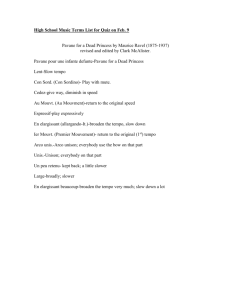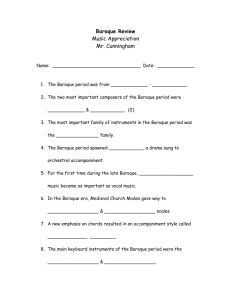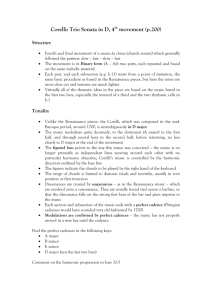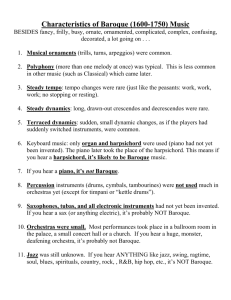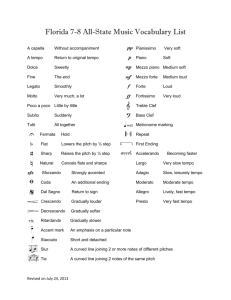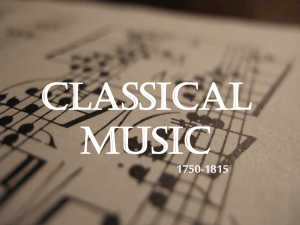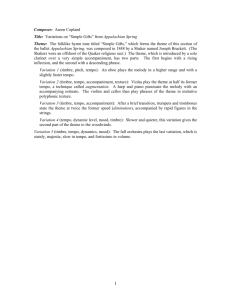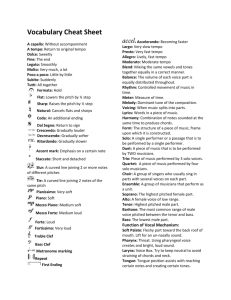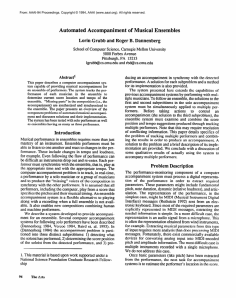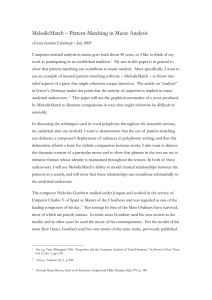Aural Revision Grade 6
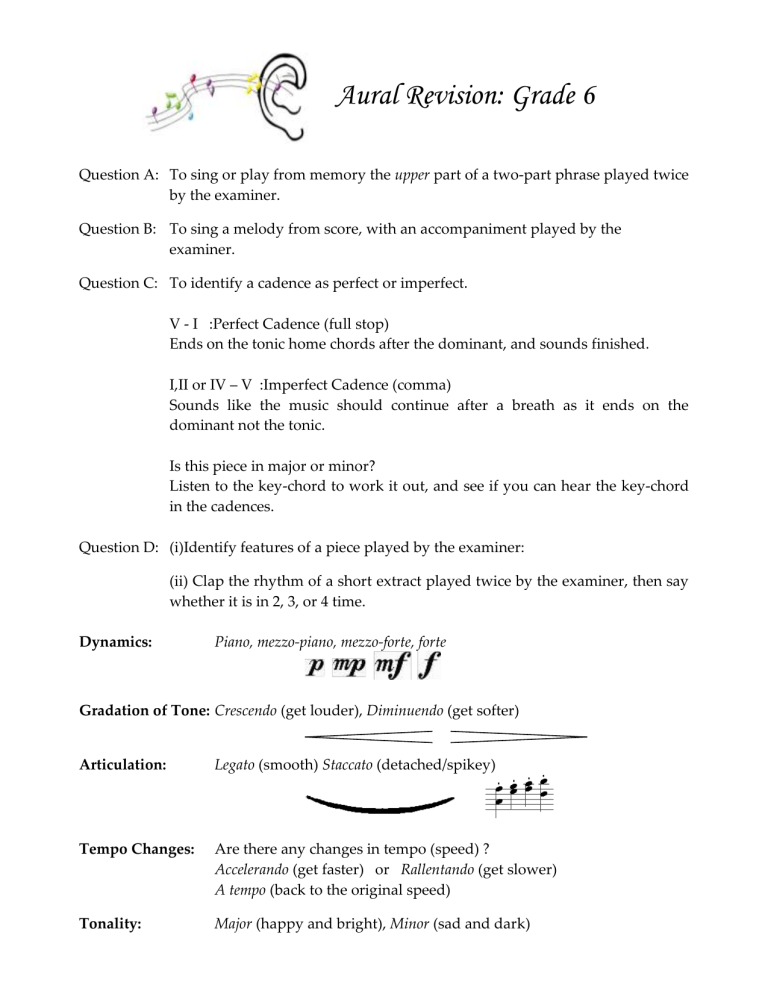
Aural Revision: Grade 6
Question A: To sing or play from memory the upper part of a two-part phrase played twice by the examiner.
Question B: To sing a melody from score, with an accompaniment played by the examiner.
Question C: To identify a cadence as perfect or imperfect.
V - I :Perfect Cadence (full stop)
Ends on the tonic home chords after the dominant, and sounds finished.
I,II or IV – V :Imperfect Cadence (comma)
Sounds like the music should continue after a breath as it ends on the dominant not the tonic.
Is this piece in major or minor?
Listen to the key-chord to work it out, and see if you can hear the key-chord in the cadences.
Question D: (i)Identify features of a piece played by the examiner:
Dynamics:
(ii) Clap the rhythm of a short extract played twice by the examiner, then say whether it is in 2, 3, or 4 time.
Piano, mezzo-piano, mezzo-forte, forte
Gradation of Tone: Crescendo (get louder), Diminuendo (get softer)
Articulation: Legato (smooth) Staccato (detached/spikey)
Tempo Changes: Are there any changes in tempo (speed) ?
Accelerando (get faster) or Rallentando (get slower)
A tempo (back to the original speed)
Tonality: Major (happy and bright), Minor (sad and dark)
Texture:
Rhythm:
How is the music layered together?
Homophonic (melody with accompaniment)
Contrapuntal (multiple tunes vs each other)
Listen for how many beats in a bar. Which beats are stressed and are there any distinctive patterns? Dotted? Swing?
Form
Binary: AB =2 Clear Sections, each usually ending with a cadence. The material may be similar but not the same.
Ternary: ABA Introduces the A section, has a contrasting B section, then returns to A.
Descriptive: Some music is written as if it describes a scene or mood, and so does not have such a formal structure.
Phrase Structure: Listen to the musical sentances in the piece.
Are the phrases the same length? Or is one longer or shorter?
Often a piece will end with a longer phrase. How did the composer vary the phrases?
Change key? Change tonality? Adding ornamentation? Exact repetition? Sequences?
Dance Rhythms
Waltz:
Minuet:
Well-known dance in 3 time. Listen for the ‘oom-cha-cha’ accompaniment.
Stately old-fashioned dance also in 3 time. The chords often change within the car as the tempo is much slower. You would hear a Minuet either in a
Baroque dance suite or an early classical sonata.
Gigue: Always in 2 or 4 time, with a cantering rhythm and lively tempo.
Musette: Listen for the drone bass in this piece.
Tarantelle: An Italian Dna,ce very fast and generally in 4/5
Sarabande: Often coupled with a Gigue, it is a slow piece in 3 time with the stress on the
2 nd beat of the bar.
Gavot: In 4 time, often starting on the 3 the first full bar. rd beat of a bar. Often 2 staccato beats before
March:
Swing:
In 2 or 4 time, often with dotted rhythms at a marching tempo.
Listen for gentle syncopations and a feeling of compound time. Often the first beat of the bar is missing, and quavers are played:
Style or Period
Baroque: Very often contrapuntal
Composers: Scarlatti, JS Bach, Handel.
Classical: Clearly defined music with obvious cadences, very often chordal accompaniments.
Composers: Haydn, Mozart, early Beethoven.
Romantic: Very often descriptive/mood music, chords are more complex, song-like melodies and it can be very passionate.
Composers: Chopin, Schumann, Tchaikovsky.
20 th Century: Development of chords, can be very dissonant harmony, different effects:
Richard Rodney Bennett: Tuneful with some slightly more dissonant harmony.
Christopher Norton: Swing or Jazz Music
Bartok: Folk melodies, with a modern, percussive flavour.
How does the style of the music give us a clue as to the period and composer?
Any Baroque or early Classical music had to make do without a sustain pedal, as it was written for the Harpsichord or Clavichord. Therefore we often have highly decorated cadences, and often there is ornamentation to fill out the gaps. Though you cannot presume that a piece with ornamentation is automatically Baroque.
The range of the piece can also be an indication as to the period. They keyboard was added to at both ends at the end of the Classical period, so if you hear very high or low notes, it is more likely to be from the Romantic or 20t Century.
And remember . . .
Be clear and confident (even if you are not sure!)

